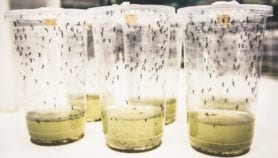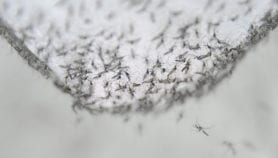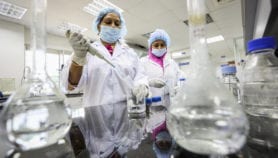Send to a friend
The details you provide on this page will not be used to send unsolicited email, and will not be sold to a 3rd party. See privacy policy.
[CAPE TOWN] Aflatoxins, toxic compounds produced by fungi that blight crops and endanger human health across Africa, could be brought under control with an array of new technologies, a conference has heard.
But a major challenge is making them better known to farmers and consumers in Sub-Saharan Africa, where there is a lack of cost-effective ways to prevent crop contamination.
Aflatoxins are naturally occurring poisons, produced by various species of Aspergillus fungus that thrive in warm, moist conditions, so developing countries are particularly affected. Aflatoxin B1, found in food crops, mainly maize and groundnuts, is the most toxic of the known types and can accumulate in crops during post-harvest processing, transport and storage.
Up to 4.5 billion people are exposed to aflatoxins, which can cause various diseases such as liver cancer in humans and stunted growth in livestock.
"We have a reasonable chance that with proper education and interventions, we can deal with the problem," Gordon Shephard, analytical chemist and chief specialist scientist at the South African Medical Research Council (MRC), and organiser of the MycoRed Africa 2011 conference on toxicology of fungi held last week (4–6 April) in Cape Town told SciDev.Net.
He added that researchers cannot completely eliminate aflatoxins, but they can at least reduce the exposure to people.
George Mahuku, a Mexico-based plant pathologist, who works on the International Maize and Wheat Improvement Center’s global maize programme in Kenya, said the group was testing field samples to identify where most infestation occurs so they can bring in cost-effective technologies appropriate for small farmers and consumers.
But some control methods that are used in the developed world are expensive and do not take into account the needs of small-scale farmers and consumers, Clare Narrod, a senior researcher at the International Food Policy Research Institute (IFPRI), told SciDev.Net.
IFPRI is also investigating cost-effective measures to reduce the risk of exposure to aflatoxins. They are looking at maize in Kenya, where 125 people died in a 2004 outbreak.
Methods being investigated include bio-control, drying crops on plastic tops and the use of metal silos.
"We may have technological solutions — most of which are still at the experimental stage — but people might not adopt them for cultural or financial reasons," said Marites Tiongco, an IFPRI agricultural economist who is researching how aflatoxins affect the livelihoods of subsistence farmers, traders and consumers in Mali. She said more research is needed on how to adapt the new technologies to the needs of local people.
Wentzel Gelderblom, a researcher at the MRC, told SciDev.Net that the simplest solution was to educate people, especially in rural areas, on how to handle or avoid mouldy crops.
He led a pilot programme in the rural Eastern Cape, South Africa to teach a group of housewives how to remove mouldy kernels on cobs or wash them in water. After the training there was a 70–80 per cent reduction in maize contamination.













